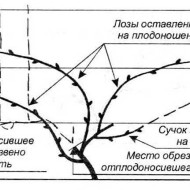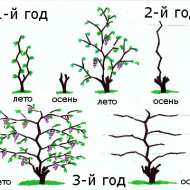The subtleties of growing high-yielding table grapes Aleshenkin
Content
The history of grape breeding Aleshenkin
Breeding work on this grape variety lasted more than twenty years. It appeared as a result of the painstaking work of the famous Soviet scientist, breeder and academician Pyotr Tsekhmistrenko. The vine got its wonderful name thanks to the beloved grandson of the academician - Alyosha. The variety was entered into the State Register under the name Aleshenkin's gift, but often it is simply called Alyosha or designated by code number 328.
The Madeleine Angevin variety and mixed pollen of several other varieties (in particular, Vostok) were taken as a basis. The breeder lived and worked in Volgograd, so the vine was zoned there, it is suitable for growing in temperate climates.
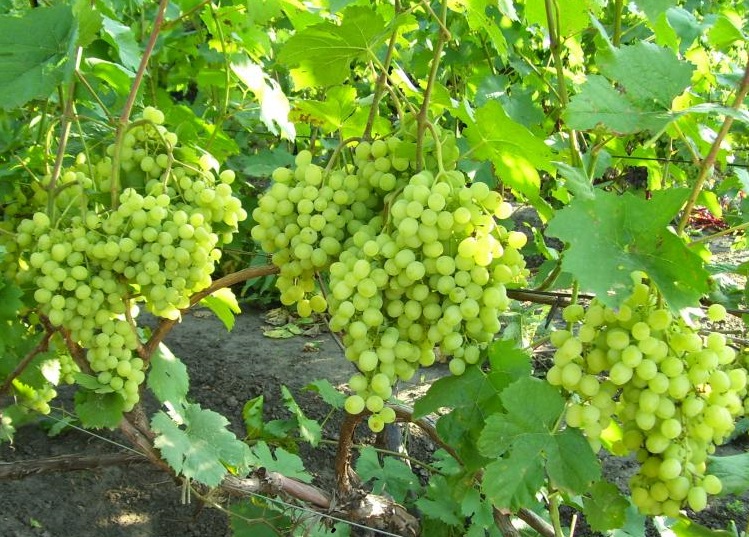
Varietal characteristics of the plant
It is very difficult to find a plant that can simultaneously serve as an excellent decorative detail of landscape design and a source of obtaining a delicious universal product. But fortunately, we have grapes.
Bush decorativeness
A powerful green mass with contrasting amber berries and brown-brown vines can decorate not only a house or a fence. Aleshenkin will be a wonderful option for arches and pergolas due to not very large, but minimally dissected dense sheet plates that will protect from the sun and create a pleasant shade.
Description of the vines and bunches
A vigorous vigorous bush with strong long "sleeves" is characterized by rapid growth and early ripening of the vine.
The vine is quite thick and strong, brown in color, bears fruit for up to 6 years. A pair of inflorescences appears on each shoot, usually bisexual. Leaves are medium in size, five-lobed, with small cuts. The leaf plate is glossy, smooth, bright green in color.
The shape of the bunch is classic, cone-shaped. The brushes are loose, the berries are loosely attached to each other, which provides access to sunlight to all tiers and reduces the risk of rapid damage to the entire bunch at once. The weight of one bunch can reach 1.5 kg, in the southern regions - up to 2 kg.
Ripe bunches can remain on the bush without compromising appearance or taste.
Commercial and taste qualities of berries
The berries are round in shape, about 2 cm in diameter, average weight - 5 g. The peel is of medium thickness, amber color, with a slight waxy bloom. Does not crack.
The flesh of the berries is very juicy, slightly crunchy and extremely sweet. 20% of sugars combined with low acidity give a very pleasant and memorable taste.
Another advantage of the berries is that almost half of them lack seeds.In the other half of the berries, there are usually no more than 2-3 seeds. Also, grapes perfectly tolerate transportation even over long distances, despite the juiciness of the berries and the thin skin.

Drought and winter hardiness
Aleshenkin calmly tolerates frost up to 26 ° C and quickly adapts to weather extremes. But the underground part of the plant is very sensitive to cold, so it is recommended to plant the variety on a frost-resistant stock.
The bush tolerates short-term drought well. Prolonged dry periods can affect the quality and quantity of the crop.
Ripening and fruiting dates
The bunches ripen evenly, after 110–115 days, usually by the end of July. The fruiting period of one vine is 5–6 years. The productive period of the entire bush with proper care can last up to 20 years. Then the yield drops sharply and the bush must be removed.
Productivity and use of berries
The yield depends on the region of cultivation and care. Under optimal conditions, up to 25 kg can be harvested from one grape bush, the minimum figure is 10 kg. Aleshenkin belongs to the table varieties. Berries are good both for fresh consumption and for making compote or juice.
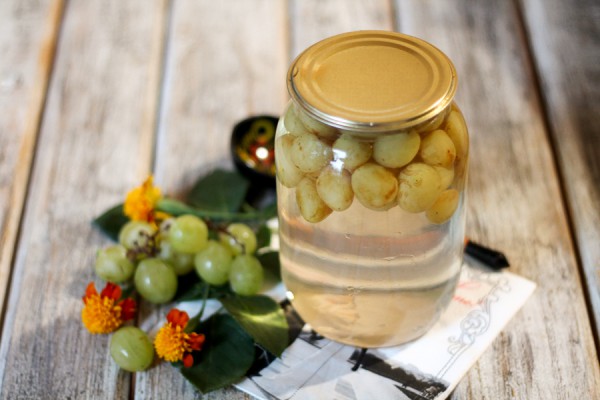
Video "Cultural grapes Aleshenkin"
This video presents the main characteristics of the variety.
Advantages and disadvantages of the variety
Aleshenkin inherited the best qualities from his "parents". However, the variety also has disadvantages that must be taken into account when leaving.
- the ability of cuttings for rapid rooting, active ripening of the vine - qualities that make it possible to cultivate the variety practically throughout the territory of Russia;
- early ripening;
- abundant regular harvests;
- excellent commercial and taste characteristics of berries;
- fruiting and ripening of brushes even in adverse weather conditions;
- decorative effect of the bush.
- low degree of frost resistance of the underground part of the plant;
- tendency to pea;
- low immunity to fungal infections.
Features of growing grapes Aleshenkin
Aleshenkin is considered one of the most unpretentious grape varieties. However, there are agrotechnical nuances that cannot be dispensed with.
Preparation of soil and planting material
There are no special requirements for the choice of location or soil. But for planting, it is preferable to choose sunny areas protected from the wind. Also, depending on the type of soil, the components necessary for the comfortable growth and development of the vine are added to the soil. For clayey soils, a drainage layer is required, peaty soil needs the addition of sand, and sandy soil needs to be enriched with organic matter. Swampy soil and salt marshes are absolutely not suitable for vines.
A few weeks before planting, the site is dug up and weeds are removed. For planting, it is better to choose seedlings with a closed root system. If the roots are open, then you need to pay attention to their color: the lighter the roots, the better. Root cuts should also be light.
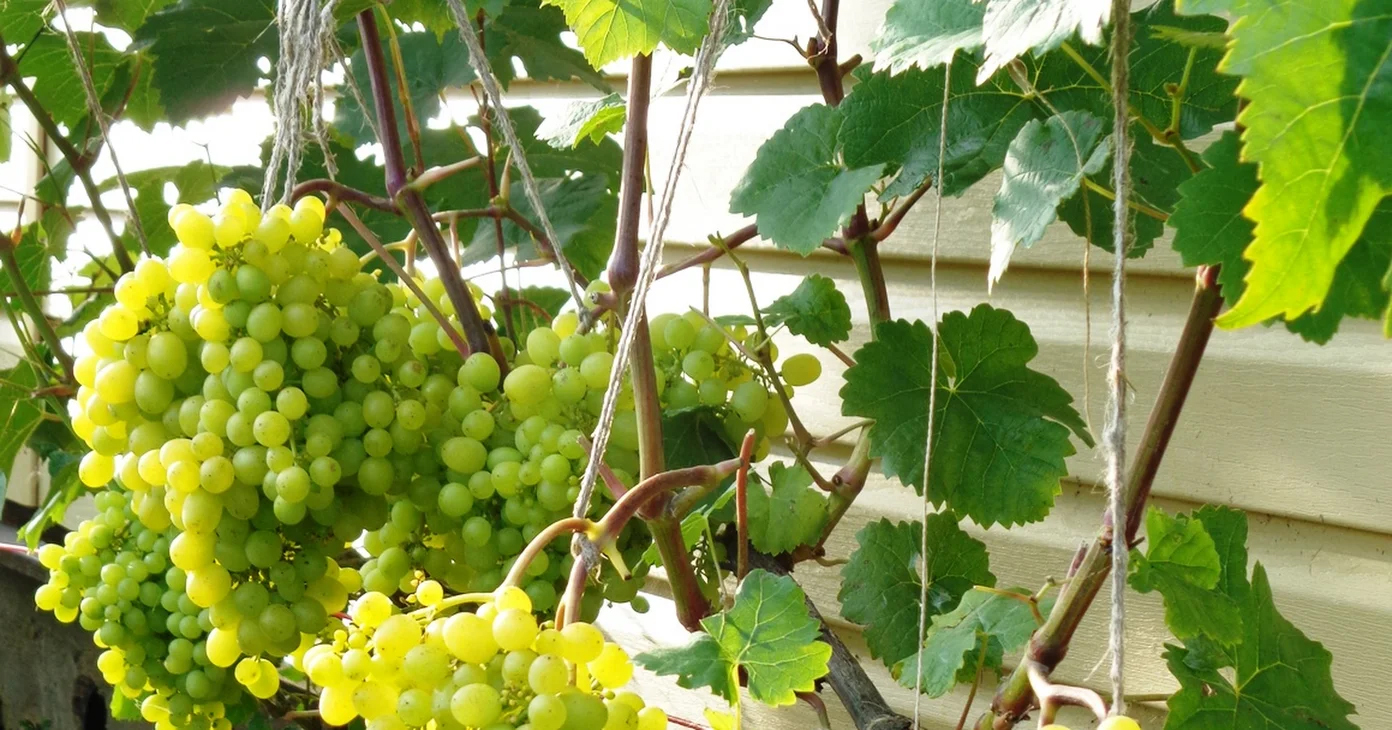
Landing scheme
Planting grapes next to trees or larger shrubs is not recommended. They will not only shade the bush, but also pull on all the nutrients. The distance between the bushes should be at least 1 m.
The planting hole should be between 0.8 m deep and 0.7 m in diameter. A drainage layer is poured to the bottom, followed by fertile soil mixed with fertilizers, humus. For shrinkage, pour several liters of hot water. Then a seedling and a peg are placed, the hole is covered, lightly tamping. After the trunk circle is abundantly moistened.
Watering, feeding and mulching
Watering should be carried out depending on the amount of natural precipitation and the type of soil. Sandy soil is watered more often, clayey - less often, but more abundantly. The grapes should not suffer from a lack of moisture, or from its excess. Especially during the rooting period and before wintering.
To insulate the root system and preserve moisture, the near-stem zone of the shrub is mulched with peat, compost, cut grass or straw. It is advisable to loosen the soil before mulching.
Aleshenkin is fed several times a year: before flowering, the formation of ovaries and wintering. Top dressing can be root and foliar. Mineral fertilizers (superphosphate, potassium salt) and organic matter are commonly used.
Pruning as a way to improve yields
Pruning performs not only a sanitary function, but also contributes to rationing and increasing yields. A mature vine is shortened to half a meter in length, leaving 5-6 buds. The gain is cut by 50–90%. Once every few years, the bush is rejuvenated, leaving the strongest and healthiest fat shoot from the bottom of the sleeve.
- Grape pruning options
Shelter for the winter
Covering vines is carried out from mid-October to mid-November. For laying, the bush must be dry, the vine is removed from the trellises, laid along the trench and covered with a special material, film or spunbond. Lay a layer of mulch and snow on top.
Prevention of diseases and pests
The immunity of the variety to fungal infections and pests cannot be called good. The shrub is often attacked by wasps and hornets, and also suffers from powdery mildew, mildew and powdery mildew. To fight diseases, you need to use fungicides or colloidal sulfur. Insecticidal traps and acaricidal preparations will help repel insects.

Winegrowers reviews
“Alyosha has been growing in our country house for 8 years already. All these years we have been collecting a generous harvest of incredibly tasty berries. The main thing is to treat the bush from pests and diseases in time, and also not to forget about pruning and feeding. "
“We got the grapes with the purchase of the house. We were quite surprised that such a magnificent harvest could be obtained with the usual care. The berries ripen by the beginning of August, but they absolutely do not lose their taste, even if they are not removed immediately. "
Aleshenkin is rightly considered one of the best varieties of domestic selection, and all his shortcomings can be corrected with proper care.


